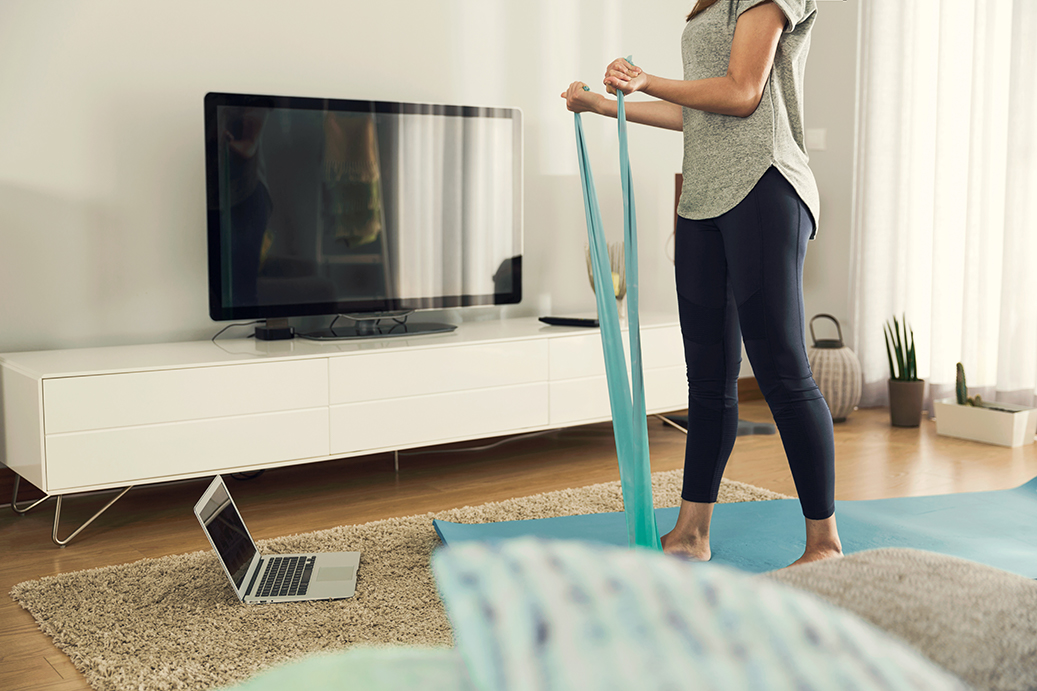We all know what physiotherapy is, right?
Things like massage, strapping/taping and exercise come to mind? Of course, as physiotherapists, we do provide all these services, but we are becoming increasingly aware that some treatment methods are more effective than others.

A NEW LANDSCAPE
Adapting and Evolving
In 2020, we have found ourselves in this surreal environment with different working conditions, changes to our normal routine, and the ways in which we access health care. We now need to social distance and in some cases self-isolate. So, what does this mean for physiotherapists? How are we going to keep the community healthy without touching them you may ask?

The short answer is we don’t actually have touch you to effectively treat you. As we’ve adapted to telehealth consults, (delivering physiotherapy care via phone or video call), we’ve found we can continue to deliver high-quality, evidence-based care and that the ‘hands-on’ approach is not always the only/best option.
The Issue with 100% ‘Hands-on’ Treatment
We’re sure you have heard of your friend going in for their weekly ‘tune-up’. Although hands-on treatment still has a place in physiotherapy, too often, it only provides a quick fix. Having your physio address the underlying cause and provide you with a good education on how the problem can be best-managed, provides long-lasting benefits.

Best Practice
The best practice is educating, empowering, and encouraging our patients to manage their own health. And at the crux of this is movement. Everyone needs to move and function. Whether it’s a walk around the block, out to the mailbox or down the hallway. We all have different capacities. But what happens when you can’t do the things you want to do? You can’t bend over to put on your shoes, you can’t play in the garden with your grandkids, you can’t play a full game of netball?
This is where physiotherapy can help. First up, your physiotherapist will take their time to understand your individual circumstances and concerns and complete a comprehensive assessment. They will then encourage movement and specific exercises to get you back moving again. This is progressed as required over a period of weeks or maybe months.

People should opt for the evidence-based pathway. This one is not necessarily longer but you may not see instant results. It may take a little bit more effort on your behalf than just turning up for your weekly rub down but in the long term, your overall health will benefit.
We need to change people’s perceptions and expectations of physiotherapy as a profession. Start the conversation with your therapist with ‘Can you show me how I can help myself’?
Tips and tricks!
- Patience, some long-standing conditions take longer to rehabilitate. Your physiotherapist will explain this in your initial consult.
- It’s not going to come without effort. You will need to commit to helping yourself.
- Set goals. Short, intermediate, and long term. If we all know what these are, we can work more effectively to get you there.
- Communication with your therapist is key! Ask lots of questions, tell no lies!
- Rest is not always the best, but sometimes is definitely needed!
If you had reservations, about the effectiveness of telehealth, we hope the above information has proved helpful. When a hands-on treatment or face-to-face consultation is not possible, we can get excellent results consulting with you via telehealth. By eliminating some of the less helpful treatments and focusing on the best evidence-based care, we can still deliver the highest quality treatment directly to you in the comfort of your home.
If you would like to make an appointment with one of our physiotherapists, please Book online, simply click here or contact the clinic on 6646 3766, we are confident we can help you.







About The Author: Fluid Physio
More posts by Fluid Physio